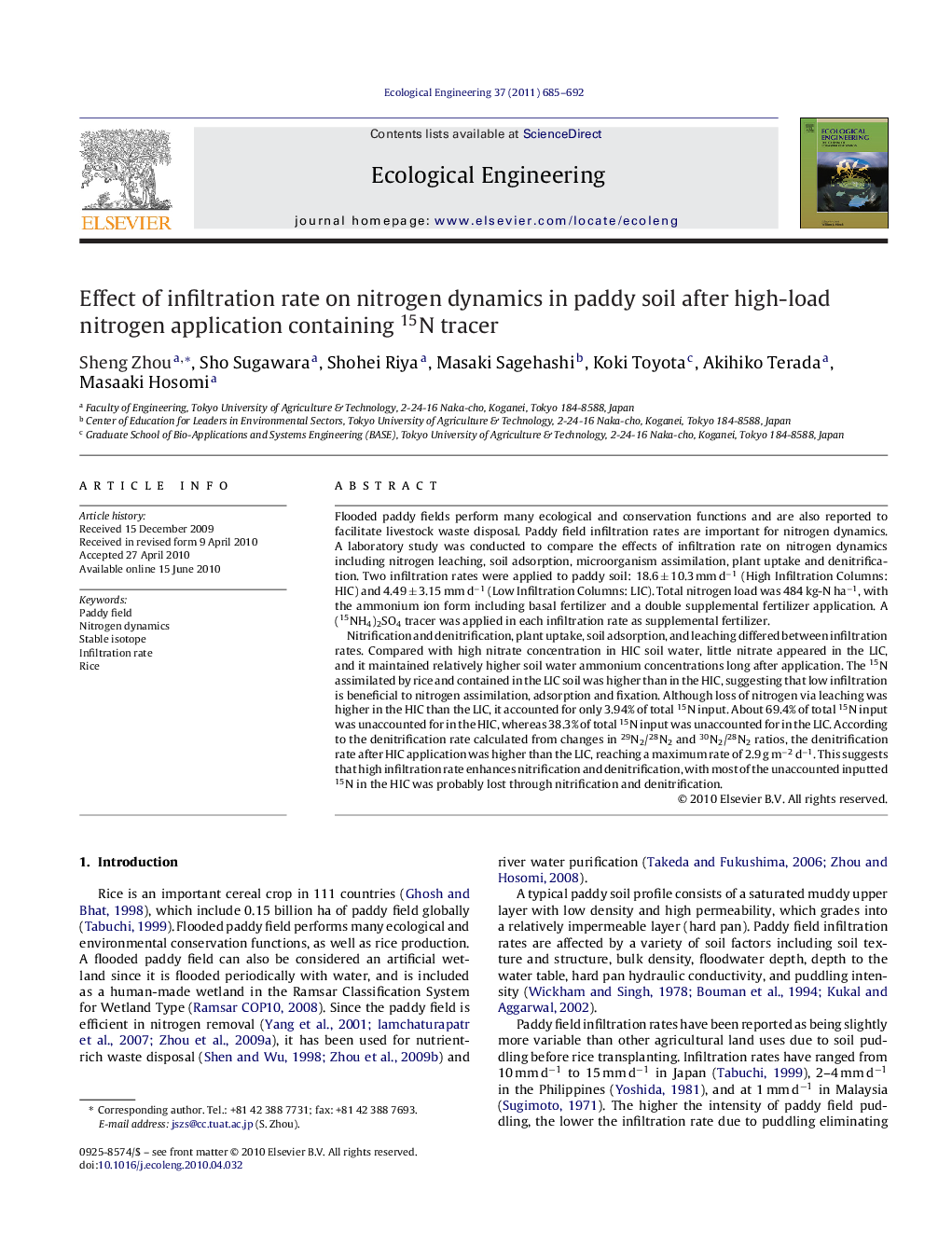| کد مقاله | کد نشریه | سال انتشار | مقاله انگلیسی | نسخه تمام متن |
|---|---|---|---|---|
| 4390183 | 1305160 | 2011 | 8 صفحه PDF | دانلود رایگان |

Flooded paddy fields perform many ecological and conservation functions and are also reported to facilitate livestock waste disposal. Paddy field infiltration rates are important for nitrogen dynamics. A laboratory study was conducted to compare the effects of infiltration rate on nitrogen dynamics including nitrogen leaching, soil adsorption, microorganism assimilation, plant uptake and denitrification. Two infiltration rates were applied to paddy soil: 18.6 ± 10.3 mm d−1 (High Infiltration Columns: HIC) and 4.49 ± 3.15 mm d−1 (Low Infiltration Columns: LIC). Total nitrogen load was 484 kg-N ha−1, with the ammonium ion form including basal fertilizer and a double supplemental fertilizer application. A (15NH4)2SO4 tracer was applied in each infiltration rate as supplemental fertilizer.Nitrification and denitrification, plant uptake, soil adsorption, and leaching differed between infiltration rates. Compared with high nitrate concentration in HIC soil water, little nitrate appeared in the LIC, and it maintained relatively higher soil water ammonium concentrations long after application. The 15N assimilated by rice and contained in the LIC soil was higher than in the HIC, suggesting that low infiltration is beneficial to nitrogen assimilation, adsorption and fixation. Although loss of nitrogen via leaching was higher in the HIC than the LIC, it accounted for only 3.94% of total 15N input. About 69.4% of total 15N input was unaccounted for in the HIC, whereas 38.3% of total 15N input was unaccounted for in the LIC. According to the denitrification rate calculated from changes in 29N2/28N2 and 30N2/28N2 ratios, the denitrification rate after HIC application was higher than the LIC, reaching a maximum rate of 2.9 g m−2 d−1. This suggests that high infiltration rate enhances nitrification and denitrification, with most of the unaccounted inputted 15N in the HIC was probably lost through nitrification and denitrification.
Journal: Ecological Engineering - Volume 37, Issue 5, May 2011, Pages 685–692